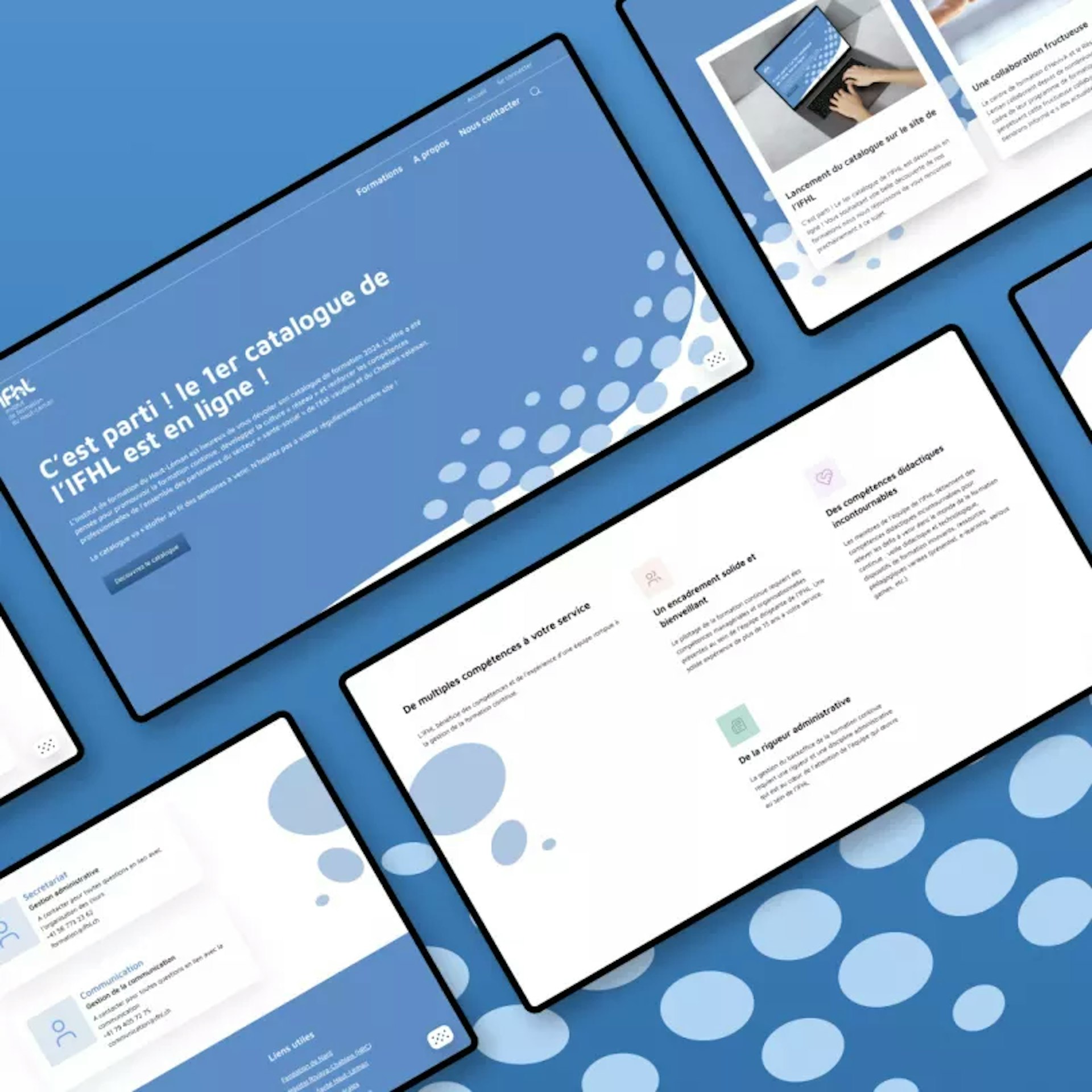
Why are tests essential to every web project?
Developpement
7 min.
From Mehdi Mele
Guarantee the quality, reliability and performance of your site or application.
Launching a website or application without testing its functionality is like opening a shop without checking whether the cash register works or whether the front door opens properly. Everything seems ready on the surface, but the first customer is a disaster.
Testing is the key to avoiding these situations. Yet they are still underestimated or perceived as an optional step. But a good digital project is more than just a pretty design and high-performance technical development: it has to be reliable, secure and pleasant to use.
At Marvelous Digital, we see testing as a strategic investment in guaranteeing a quality website or application. It allows you to anticipate and correct errors before they become a problem for your users or your business.
In this article, we'll look at the following topics:
- What are the different types of tests we carry out and what are they used for?
- Our step-by-step methodology for ensuring a functional, high-performance site.
- How to choose the right tests for your project (site/app creation, redesign or development).
The importance of testing for a reliable website or mobile application.
Before we talk technicalities, let's ask ourselves a simple question:
What kind of risks does a digital project that has not been properly tested before launch run?
- A user can't validate his shopping basket because of a bug → loss of sales.
- A site displays its content incorrectly on mobile → poor user experience and visitors leave.
- After an update, an application has a blocking bug → avalanche of bad reviews on your store (PlayStore / AppStore) and uninstallations of the latter.
- An e-commerce site where the ‘Add to basket’ button doesn't respond? That's lost sales.
- A mobile application that crashes as soon as you open it? The user uninstalls it immediately.
- A site that's too slow or poorly optimised for mobile? Google will penalise it (SEO), and your visitors will go to the competition.
These problems can be costly and damage a company's image. That's where testing comes in.
At our digital agency, we integrate testing at different stages of a project, whether it's a creation, a redesign, a bug fix or continuous improvement.

What are the different types of test and what do they involve?
There are a multitude of tests. Some are essential for all types of project, while others need to be adapted according to the nature of the project, its progress and its history. However, a QA Tester needs to know how to choose the right tests depending on the context and the criticality of the functionalities to be tested!
We're going to take a closer look at the most common tests, both automated and manual, which play a key role in the quality assurance of websites, platforms and mobile applications.

Functional testing: checking that everything works as planned.
It's simple: we make sure that all the functionalities of a site or application meet expectations. These functional tests are made up of :
- Unit tests: checking the smallest units of code (often carried out by developers).
- Integration tests: Checking the interaction between different modules, sections, pages or third-party services.
- System tests: Verification of the overall operation of the system according to requirements.
- User Acceptance Tests (UAT): Checking whether the element meets the needs of the end-users according to the requirements imposed upstream.
- User testing: Carrying out tests with real users to observe their reactions and detect potential bottlenecks in the experience.
To sum up, here are a few concrete examples:
- Checking that the contact form actually sends a message.
- Testing a payment process to avoid transaction errors.
- Ensuring that the connection to a customer area works.
Non-functional testing: ensuring quality beyond functionality.
They are used to assess essential aspects such as the performance, security, accessibility and user experience of the element under test.
They measure how a feature behaves in different contexts.
They include
Performance testing :
- Load testing: to check whether the system supports a large number of users.
- Stress testing: Simulate an extreme load to see how stable it is.
- Scalability testing: to check how the system evolves as resources increase.
- Response time testing: Check the speed of actions.
- Technical SEO tests: Analysing the site's structure and mark-up for indexing and visibility on search engines.
- Accessibility tests: Checking compliance with WCAG standards for people with disabilities.
- Usability tests (UX/UI): Testing the ergonomics, responsiveness, ease of use and intuitiveness of the interface.
- Compatibility tests: to check that it works properly on different browsers, operating systems and devices.
Security testing:
- Pen testing: to identify security flaws.
- Vulnerability testing: Checking exposure to attacks.
- Authentication testing: Testing the security of connections (login/logout, sessions).
Other concrete examples of these non-functional tests:
- Check page load times on different devices.
- Simulating an influx of visitors to see if the site can handle the load.
- Detecting and correcting heavy scripts that slow down the user experience.
- Check that the site adapts perfectly to mobiles and tablets.
- Test the intuitiveness of user paths (e.g. registration in just a few clicks).
- Ensure that the colours and contrasts comply with accessibility standards (WCAG).
- Test the site's resistance to hacking attempts.
- Check compliance with data protection standards (nLPD).
- Secure transactions and user connections.
Our testing method: how does Marvelous guarantee the quality of your project?
At Marvelous Digital, we integrate testing at the very start of the project to avoid late and costly corrections. Here's our approach:
- Definition of test scenarios: Upstream, what are the critical paths to be validated?
- Manual testing: Our experts test the functionalities and spot any errors, then report them to the developers using a ticket/open task.
- Automated testing (depending on the project): Using technical tools, to ensure long-term stability, regression tests are defined and launched each time an element is implemented.
- Corrections and improvements: Each problem detected is reported, corrected and monitored before going online.
- Final tests before going live: A very important penultimate quality check before going live.
Post-delivery testing: Once online in the production environment, we review to ensure that all functional and non-functional elements meet the defined requirements. - Post-delivery testing: Once online in the production environment, we review to ensure that all functional and non-functional elements meet the defined requirements.
Here are a few examples of the tests we carry out on certain types of project.
Creation of a website, e-commerce, SaaS and application
- Functional testing (navigation, forms, payments, interactions)
- UX/UI testing (ergonomics and adaptability on mobile)
- Performance testing (loading times)
- Security tests (data protection)
Goal: To launch a reliable, fast and user-friendly product from day one.
As part of a website, e-commerce, SaaS or application redesign
- Compatibility tests (checking that everything works after migration)
- UX/UI testing (adapting the user experience to the new standards)
- Performance testing (optimising speed and fluidity)
- Security tests (readjusting protection measures)
Goal: to ensure a bug-free transition and improve the user experience.
Upgrades and updates
- Automated tests (automatically detect errors after an update)
- Regression testing (to ensure that an enhancement has not broken another feature)
- Load tests (to check that the site continues to perform despite having more users)
Goal: to maintain performance and stability over the long term.
In conclusion, testing means anticipating problems before they become costly!
Overall, testing allows you to anticipate and correct errors before they become a problem for your users or your company.
A high-performance, reliable digital project necessarily involves a rigorous testing phase.
Whether you're launching, redesigning or upgrading, testing your website, e-commerce, SaaS or application means guaranteeing an optimal user experience and avoiding unpleasant surprises.




